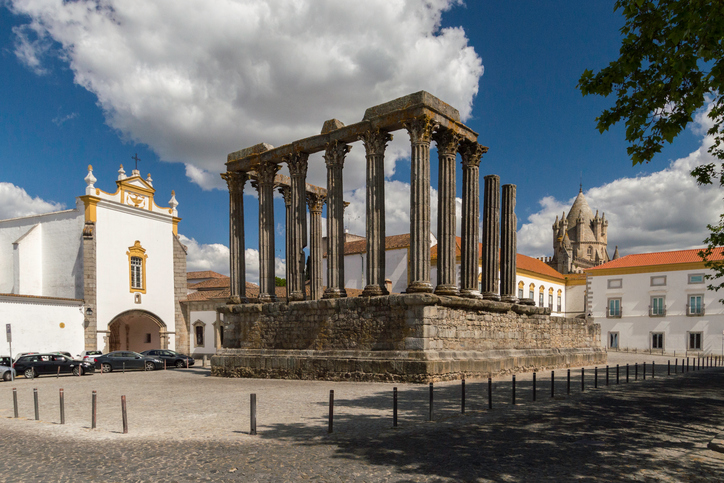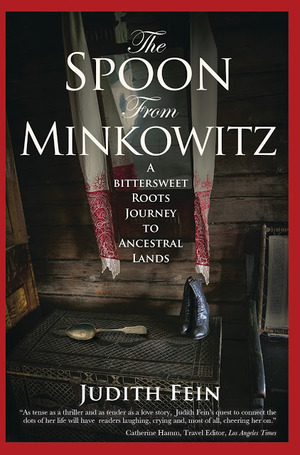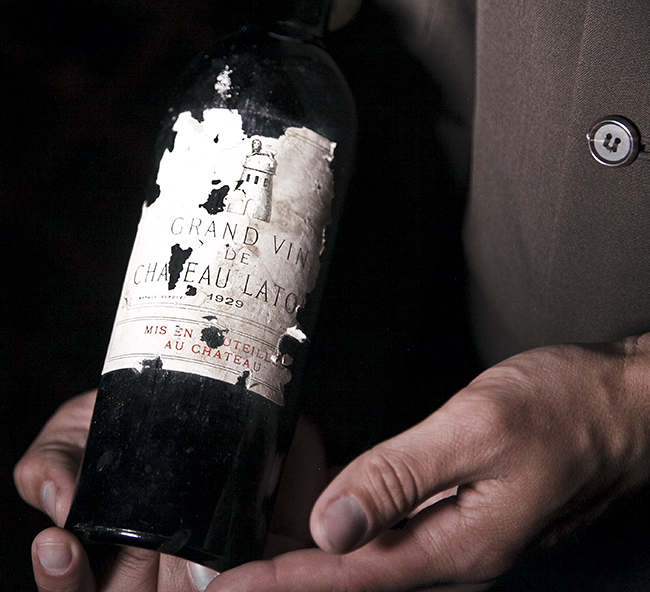In a world that seems to be spinning out of control, Ellen Barone is surprised to find that she is still full of hope. Like everyone else, she has moments of disgust and despair, but then, almost miraculously, a ray of light shines through. How does this happen? She blames it on travel.
All in travel
The Inside Scoop on Paris Museums
Writer Dorty Nowak has lived in Paris, on and off, for ten years. When friends planning a trip to the City of Lights for the first time ask her what museums they should visit, her number one choice, the Carnavalet, rarely makes the guidebook "must visit" lists. Get the inside scoop on what makes it so special.
NEW HAMPSHIRE—Presidential Primaries, Sightseeing, Skiing, and Summer Fun
by Judith Fein
When I was a child, living in New York City, my family loaded themselves and their belongings into a car every August and headed for New Hampshire. There was never any question about going somewhere else; we had allergies and Bethlehem, New Hampshire had no pollen. In a fit of hopeless nostalgia, I decided to go back this past summer, to see if I could find the locus of the sneeze-free bungalow colony where we stayed. And, being a travel addict, I decided to check out what else there is to see in New Hampshire with 10 days, a car, and a desire for culture, charm, a foodie infusion, local attractions, art, nature, and quirk.
I discovered that New Hampshire is a year-round destination: Fall foliage viewing, skiing, and Presidential primary candidate viewing that starts in the Winter, and touring and hiking in the Summer.
Touring for Gold: Traveling in an Economy
by B.J. Stolbov
I’ve often wanted to see where the gold in my wedding ring came from, or the gold in a bracelet and necklace, or the gold in a camera, cell phone, and computer. (Yes, there’s gold in a computer!)
Didipio Gold Mine isn’t easy to get to. It’s in an isolated corner of Quirino Province in Northern Luzon in the Philippines. It’s more than an hour’s drive from the nearest town, Didipio. The narrow, gravelly road twists and turns, up and down, through hills and valleys, untouched and unspoiled, lush and green, with stands of coconuts and groves of bananas, lots of bananas. Only a few houses can be seen from the road. The mine is out-of-the-way in one of the least populated areas in one of the least populated provinces in the Philippines.
Editor's Note: This article is part of a new series by writer-photographer Paul Ross featuring field-tested reviews of places, products and services that enhance the travel experience. All are evaluated honestly. If something is just bad, he won’t write about it. If it's really bad, or darn right dangerous, he will warn you.
Story and photos by Paul Ross
This year I decided to celebrate my birthday early in San Francisco.
As an AARP-certified senior, it’s years since I’ve been festive about my natal day and even longer since I’ve visited “Baghdad-by-the-bay” (coined in the 1940’s by San Francisco columnist Herb Caen). Growing up in Southern California, I osmotically acquired a slight sense of residual rivalry toward Frisco. We had sun, surf, sand, and they had fog, cold, and business. As an adult, I figured it was time to explore what many locals call “the City” had to offer.
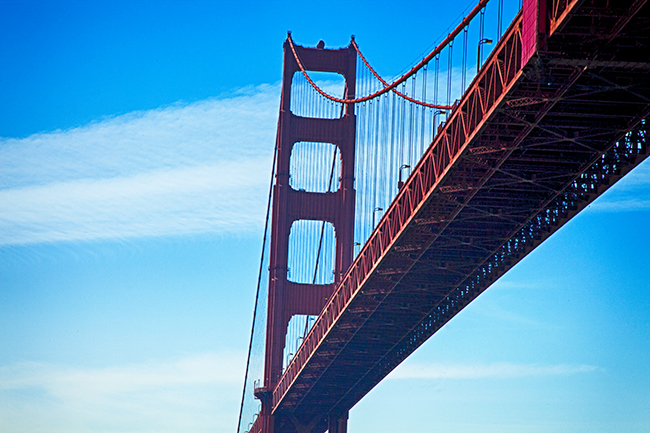 The Golden Gate Bridge. (The only ways to get this particular view are swim, jump or take a bay cruise. I recommend the last.)
The Golden Gate Bridge. (The only ways to get this particular view are swim, jump or take a bay cruise. I recommend the last.)
BAY AREA CLASSIC
I decided to start out with a Bay Area classic: the venerated Mark Hopkins hotel atop elegant Nob Hill via cable-car-carrying California Street. The hotel features a museum of the hotel’s colorful history from its Victorian era founding through its heyday housing of celebrity guests; their favorite watering hole was the Top of the Mark with its almost 360 degree view.
I was fascinated by nostalgia-laced mementos and exhibits, like a video interview with a nonagenarian who was once a nude model and photos of the big bands that had played there. “The City” preserves her majesty in ornate buildings and cable cars, one of which I rode down to Chinatown, while vowing to hike back up the really steep slope to work off Sum of my Dim dumplings.
When, on a family vacation, I first went to Chinatown as a kid, my grandfather took us all to a restaurant frequented by Danny Kaye, so of course I had a yen to go back. Located on heavily touristic Grant Avenue, the food is so tired that it could’ve been leftovers from Kaye’s days. But when I walked a few blocks from Grant to Jackson Street, I discovered Z & Y, which, despite its bland name, featured hot and spicy Szechuan delights I never dreamed of as an L.A. boy. Z&Y is on the same block as the P&R and the ABC restaurants and is as easy to find as 1,2,3.
This week, our executive editor, Judith Fein, published a book that has already garnered great reviews and word-of-mouth referrals—THE SPOON FROM MINKOWITZ: A Bittersweet Roots Journey to Ancestral Lands. Writer Caren Osten Gerszberg interviewed Fein in the Q&A below for a YourLifeIsATrip.com exclusive. Read on to discover the story behind the story.
Q: In your book, you recount your lifelong quest--since learning six facts about your grandmother's life in Russia--to return to her village. Why do you think you were interested to learn of your family roots at such a young age?
JF: I think that some of us were born to be musicians, teachers, writers, social workers, or mathematicians. I was fingered by fate to find out the truth about my ancestors, and to honor all of those who came before me. My grandmother spoke with an accent, believed in unseen forces, and came from an exotic country. She didn’t want to talk about her past life. My mother refused to tell me about the village her mother came from. And the more they stonewalled me, the more I wanted to know. I was a little kid, but I followed the six paltry clues I had like a sleuth. In fact, I can honestly say that I was living in a detective story.
Q: Throughout your journey, you were repeatedly "hitting walls" when it came to learning about Minkowitz--such as with your mother and the man on the train in Paris. What provoked your will to continue the search?
JF: I was obsessed. No matter what anyone said or did, I was undaunted. I loved my grandmother. I was on the phone with her right before she died. It was my secret mission to get to her village and find out what no one would tell me. I wanted to know who she was before she was my grandmother. And when I grew up, I discovered that a lot of people were just like me. No one in their families spoke about what happened before they came to America. I was absolutely determined to find out, for myself and for others who had never asked the questions, but who cared, who were curious, who wanted or needed to know.
Q: When you first arrived in the Ukraine, you made connections with older women. How did that bring you closer to your grandmother and your plight to visit Minkowitz?
Editor's Note: This is the first article in a new series by contributor Paul Ross featuring field-tested reviews of places, products and services that enhance the travel experience. All are evaluated honestly. If something is just bad, he won’t write about it. If it's really bad, or darn right dangerous, he will warn you.
Here’s what he's found for you this time:
- One vintage California hotel with a retro restaurant and a speakeasy bar.
- One steal of a deal at a top eatery in Santa Fe, New Mexico, that’s ideal for celebrating anything.
- Two pieces of gear: an easy, convenient and affordable way to communicate while overseas, and a compact, dedicated, hi-def time-lapse camera for less than $300.
by Paul Ross
California Retro
Part of my cred as a native Angeleno is that the hospital where I was born has been torn down. I lived a lot of my life in the crawling sprawl of that city. I can’t really say I grew up there because showbiz’s youth obsession has always eschewed “growing up.” Los Angeles is where history barely clings to the margins and a restaurant can boast without irony that it’s been “a tradition since this afternoon.”
I love the rarity of the Big Orange’s old buildings that survive in the corners of reinvention central. The Georgian (www.Georgianhotel.com) is just such a place; her face is a blend of Romanesque Revival and Art Deco and, like many in Southern California, she’s had a few cosmetic touchups over the years. For one who is now celebrating her 8th decade, the old girl looks pretty good.
As a nostalgic anniversary nod, the indoor restaurant and the veranda with a view of the Pacific Ocean are offering a ”Prohibition Era” menu that includes both historic cocktails and vintage culinary specialties. Among the classic imbibables are a French 75 (sparkling wine & gin), the martini-esque Negroni, the whisky-based Manhattan and Rob Roy and a harken-back-to-Hollywood’s heyday Brown Derby (bourbon, grapefruit juice and honey). All of these are in the $9 to $12 range. After sipping a couple samples, and eating bygone staples like the Monte Cristo sandwich and Waldorf salad, I was glowing like the sunset and sinking into the woven wicker chair.
Once the sun was down, I wandered inside the hotel, where deco design furnishings graced the lobby. Somewhere there was music: Sinatra, Satchmo, Cole Porter, show tunes.
“ ’want to see our secret surprise?” the bartender asked.
story and photos by Paul Ross
I suppose that, like most people, topping my “What if..?” fantasy list is the question, “What if I had a lot of money?”–So much money, that not only would I not have to worry about it, I would never even have to think about what I spent. What would I do with those kinds of assets? Support charities? Fund politicians? Gamble (and I include the stock market)? Or just buy a lot of stuff? And what form might the purchasing take? I already travel, so-- Cars? Clothes? Jewelry? Boats and planes? Art?
In this last category, I had a chance to see what that indulgence might look like at the Nemacolin Woodlands Resort in the Laurel Highlands region of Pennsylvania. Grillionaire Joseph A. Hardy made megabucks through 84 Lumber, his building supply chain store. I didn’t meet the man but, from what I heard, what I saw in images of him scattered throughout the expansive property and the nature of the complex itself, I got an impression: big, brash, determined, impulsive, self-motivated, assured beyond surety, independent and generous; in short, a real American. Let me paint the picture for you from what I experienced. See if you get the same mental image.
story and photos by Paul Ross
Getting to Myanmar (Burma) is a trip, but getting around while in-country can be an adventure.
During 18 days of travel, we rode in human-pedaled trishaws, rickety horse-drawn carriages, vintage trains, and boats of every imaginable size, shape and color. Squeezed into crowded truck-busses, we joined indigenous commuters, and used the smattering of Burmese phrases we picked up along the way to interact and become part of their day. In turn, they became part of our memories.
Much more than transportation, these conveyances provided an intimate glimpse of everyday life, a profound sense of place, and an authentic connection to this rapidly changing country.
Traveling with Eldertreks, an adventure travel company for travelers 50 and older, my wife, Judie, and I were able to step outside the tourist bubble and travel with the locals.
Here's the visual proof.
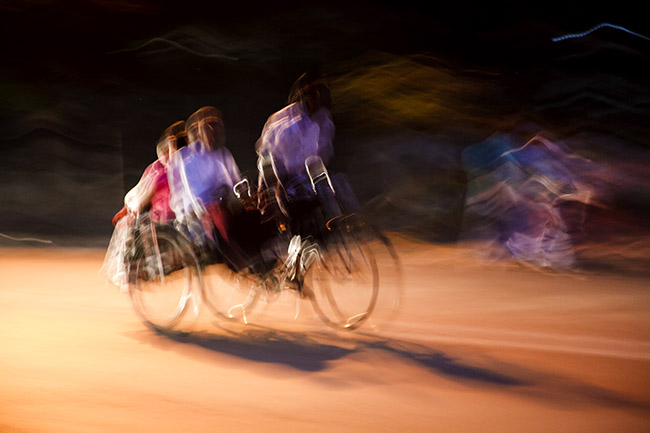
An old converted bicycle, with its five-inch seat not constructed with wide-beamed Americans in mind, and a bumpy dirt road make for a colorful experience, especially if you add in the black and blue marks on your backside. The peddler/driver's friend rode along, balancing on the bike's peg, as either a human GPS or a spare "engine." Far from "the days of Raj" luxury (the Brits colonized Myanmar as well as India), the trishaw is a practical taxi in a bustling, developing country and ––like all taxis everywhere–– it's best to negotiate the fare in advance of the trip. You want to help the local economy but--
by Elyn Aviva
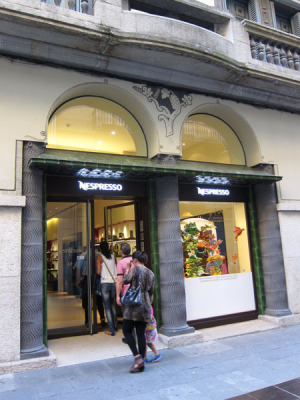 When we went for an early morning stroll in Girona, Catalonia, my husband, Gary, and I saw a group of well-dressed people standing impatiently outside a shop. We took a closer look and saw a storefront with impressive, fluted grey stone columns, large display windows, and imposing glass double doors. The merchandise on display was unusual: small metallic capsules in coordinated colors arranged in geometric designs. Emblazoned in glowing white letters over the doors was “Nespresso.” Nespresso? The coffee capsule brand?
When we went for an early morning stroll in Girona, Catalonia, my husband, Gary, and I saw a group of well-dressed people standing impatiently outside a shop. We took a closer look and saw a storefront with impressive, fluted grey stone columns, large display windows, and imposing glass double doors. The merchandise on display was unusual: small metallic capsules in coordinated colors arranged in geometric designs. Emblazoned in glowing white letters over the doors was “Nespresso.” Nespresso? The coffee capsule brand?
The crowd grew increasingly noisy and impatient. We decided it was time to leave before they became even more restive.
I was puzzled. Who would want to purchase pre-made coffee capsules? It seemed neither cost-efficient nor ecologically sound. And besides, when you ran out, there was nothing you could do—except wait desperately for the Nespresso shop to open.
Returning from our stroll, we paused again at the shop. Nespresso was its name and luxury was its selling point. From our vantage point we could see inside. Slim young women in classy matte-black uniforms stood near the open door, gatekeepers into this exclusive club. People entered, sometimes showed a membership card, chatted for a moment discreetly, and then were ushered into this high temple of gustatory excess.
words and photography by Aysha Griffin
“Aren’t you afraid?” and “Isn’t it dangerous?” These were the consistent questions posed by friends and family upon hearing I had booked a trip to Mexico. From my standpoint, it was a matter of avoiding winter’s cold, pursuing Spanish language studies and visiting American friends in San Miguel de Allende, a picturesque colonial city located in Mexico’s central state of Guanajuato.
 San Miguel de Allende, MexicoWithout any fear I flew from Albuquerque to Leon-Guanajuato Airport, via Houston, avoiding any border violence issues, and a 90-minute shuttle bus ride delivered me to this established and renowned cultural enclave of ex-pats and snowbirds. But the question of danger and safety in Mexico is not an easy or simple one to answer.
San Miguel de Allende, MexicoWithout any fear I flew from Albuquerque to Leon-Guanajuato Airport, via Houston, avoiding any border violence issues, and a 90-minute shuttle bus ride delivered me to this established and renowned cultural enclave of ex-pats and snowbirds. But the question of danger and safety in Mexico is not an easy or simple one to answer.
There is violence in Mexico, as everywhere. I recall an Australian friend who, landing in L.A. for his first trip to the U.S., called to ask if he should buy a gun – a reasonable question given the FBI estimate of over 200 million privately-owned firearms.
Americans – with our recent history of internal terrorism (Oklahoma City), external terrorism (September 11th), intentional public shootings (Tucson supermarket), serial murderers, drive-by shootings, rapes and other domestic violence; with handgun murders a daily occurrence in U.S. cities, and the largest prison population in the world – are hardly in a position to point fingers at the dangers abroad.
However, there is something different happening in Mexico. At the core are not just anger, political intolerance, insanity and psychopathic behavior, but money and turf war power, with illegal drugs (primarily marijuana) as the medium.
Thirty years ago, when I lived and traveled in Mexico for six months, handguns were illegal and even the police were gunless. At that time, Mexico was an extremely safe place in regard to violent crime. Corruption, usually in the form of bribes to officials, was a known, accepted and non-violent interaction. That was two generations ago and the world has changed in countless ways.
words and photos by Don Mankin
CLIMBING AUYAN TEPUI
The wet, slanted face of the boulder looks treacherous. To make matters worse, the bottom edge hangs over a precipitous drop-off with nothing below but air. I’m not sure how I am going to work my way up its slippery surface. As Alejandro reaches his hand out to help me, my boots slip and I slide out of sight. For what seems like an eternity, I am in free fall, not sure how far I will fall or what I will land on when I hit bottom.
It was the third day of an 8-day trek up, on and down Auyan Tepui, the largest of the tabletop mountains of Venezuela (tepui means “house of the gods” in the language of the indigenous Pemon people). There are over 100 tepuis in SE Venezuela, ancient sandstone mesas that jut thousands of feet straight up from the jungle and savannahs below. The most famous tepui is Mt. Roraima, supposedly the inspiration for Sir Arthur Conan Doyle’s “The Lost World,” as well as for the hit animated movie, “Up.” Auyan Tepui is larger, more difficult to climb and receives far fewer visitors. It is also the source of Angel Falls (“Paradise Falls” in the movie, “Up”), the world’s highest waterfall at over 3000 feet. Since the tepuis are very old, the flora and fauna that have evolved on the tops of the tepuis are very different than those in the jungles and savannahs below. In fact, the tepuis are like islands in the sky, so each one has plants and animals unique to itself. One of the things they all have in common, though, is that there are no dinosaurs despite the fanciful speculations of Sir Arthur.
words + photos by Melanie Fidler
 My mom and I just got back from a mother-daughter bonding trip to Italy to visit my little sister, Jaclyn, who is studying abroad in Florence. We traveled hand-in-hand to Venice, Florence, and Rome in 10 days. It was the first trip we took, just the two of us. It was my first trip to Italy and I was happy to have my Italian mother with me.
My mom and I just got back from a mother-daughter bonding trip to Italy to visit my little sister, Jaclyn, who is studying abroad in Florence. We traveled hand-in-hand to Venice, Florence, and Rome in 10 days. It was the first trip we took, just the two of us. It was my first trip to Italy and I was happy to have my Italian mother with me.
 We started off in Venice, a magical wonderland of masquerade masks, Murano glass, gelato, and romance. If only I was on my honeymoon! It’s an amazing place that almost seemed fake, like a movie set. Instead of streets and highways filled with car traffic there were quaint canals and waterways with gondolas and boats. We really did nothing all day but wander the streets, get lost, find our way, and eat, drink and be merry with the locals. I’m lucky to have had my mom there to experience such fine treats with me.
We started off in Venice, a magical wonderland of masquerade masks, Murano glass, gelato, and romance. If only I was on my honeymoon! It’s an amazing place that almost seemed fake, like a movie set. Instead of streets and highways filled with car traffic there were quaint canals and waterways with gondolas and boats. We really did nothing all day but wander the streets, get lost, find our way, and eat, drink and be merry with the locals. I’m lucky to have had my mom there to experience such fine treats with me.
Boycott Mexico? No, boycott American stupidity
The market vendor handed me the sack of fresh-made potato chips she’d just hauled out of the fryer, and motioned that I should add a bit of salt and lime juice. I told her thanks in my serviceable Spanish (mil gracias, senora) and did as instructed. Then I gently lifted one chip from the sack and took an experimental bite. I’d never tasted made-on-the-spot potato chips until my wife and I wandered by this food cart in the market in Patzcuaro, Michoacan, Mexico.
It was the best potato chip ever.
Too bad that one potato chip had more mental acuity than some of our own countrymen. Don’t go to Mexico and spend your money, urge the Americans United to Halt Tourism in Mexico, on the novel theory that the way to discourage Mexican immigrants from coming here to earn money is for us to not go there and spend money.
Vegas On The Cheap
by Jules Older
With the possible exception of myself, I don’t know a cheaper sonofagun than Charlie Leocha. It’s no coincidence that we’re both writers — a notoriously underpaid gang of rogues who survive on free lunches. Wanna meet a writer? Wait by the food table at any press conference. The first ones there – plates in hand, pockets bulging — that’s us.
A Drive along the Arizona/New Mexico Border
The best thing about taking to the roads is that we see things we are not supposed to see; this happened to me driving t hrough southern Arizona, a few miles from the Mexico border.
hrough southern Arizona, a few miles from the Mexico border.
Right away I began to notice white border patrol cars lumbering along the dirt roads that parallel the highway. A low-flying plane droned overhead. In the distance, a strange black smudge snaked across the desert; it’s the fence the Federal Government is building, about half of which is, or will be, in Arizona. Under Bush, 601 miles of the fence were built; 69 miles remain to be completed, and President Obama has yet to rescind the order.
Driving east, we were stopped at four checkpoints and pursued once for “evading our checkpoint”—we were looking at a map. All five times, the border patrol officers took one look at us and passed us through. After all, we are white.
Recently I found myself at the world’s largest ice-fishing tournament on Hole in the Day Bay of Gull Lake near Brainerd, Minnesota. There are probably two words I never wanted to use in the same sentence – ice and fishing – so it was with some reluctance that I found myself there in the first place. But being nothing if not a good sport, I packed all the cold weather clothing I could muster.
by Judith Fein
Achoo. Scratch scratch. That is my response to dogs, cats and anything that has more than two feet and is covered with hair. My eyes blow up. I wheeze. I get a je-ne-sais-quoi hairball thing in my throat. And how can I help offending friends who are in love with their Poopsies and KitKats? All I can think about is: get me home so I can throw my clothes and myself in a washing machine.
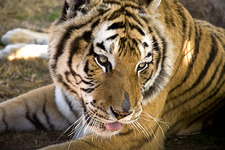 © Paul Ross.But it’s different when the hirsute ones are out of doors. I went on a safari in South Africa and got so close to the lions, zebra, tigers, elephants and giraffes that I could see the whites of their eyes. No wheezing, no sneezing. I actually bid on a baby camel at a livestock auction in Tunisia, but I couldn’t figure out how to build a camel pen in my bedroom that would filter out airborne (hair) allergens.
© Paul Ross.But it’s different when the hirsute ones are out of doors. I went on a safari in South Africa and got so close to the lions, zebra, tigers, elephants and giraffes that I could see the whites of their eyes. No wheezing, no sneezing. I actually bid on a baby camel at a livestock auction in Tunisia, but I couldn’t figure out how to build a camel pen in my bedroom that would filter out airborne (hair) allergens.
After a long hiatus from the animal kingdom, which corresponded to my running out of Benadryl, I happened to be in Northwest Arkansas, and heard there was the largest big cat reserve in the country at Turpentine Creek in Eureka Springs. Beloved by the NW Arkansas citizens, it inspired local giants Walmart and Tyson to donate about 300,000 pounds of chicken, turkey, beef, fish and pork every year to feed the beasts. And visitors can sponsor an animal and even choose its name. Hey, I’m a sucker for feel good things, so off I went.
Achoo. Scratch scratch. That is my response to dogs, cats and anything that has more than two feet and is covered with hair. My eyes blow up. I wheeze. I get a je-ne-sais-quoi hairball thing in my throat. And how can I help offending friends who are in love with their Poopsies and KitKats? All I can think about is: get me home so I can throw my clothes and myself in a washing machine.
 © Paul Ross.But it’s different when the hirsute ones are out of doors. I went on a safari in South Africa and got so close to the lions, zebra, tigers, elephants and giraffes that I could see the whites of their eyes. No wheezing, no sneezing. I actually bid on a baby camel at a livestock auction in Tunisia, but I couldn’t figure out how to build a camel pen in my bedroom that would filter out airborne (hair) allergens.
© Paul Ross.But it’s different when the hirsute ones are out of doors. I went on a safari in South Africa and got so close to the lions, zebra, tigers, elephants and giraffes that I could see the whites of their eyes. No wheezing, no sneezing. I actually bid on a baby camel at a livestock auction in Tunisia, but I couldn’t figure out how to build a camel pen in my bedroom that would filter out airborne (hair) allergens. After a long hiatus from the animal kingdom, which corresponded to my running out of Benadryl, I happened to be in Northwest Arkansas, and heard there was the largest big cat reserve in the country at Turpentine Creek in Eureka Springs. Beloved by the NW Arkansas citizens, it inspired local giants Walmart and Tyson to donate about 300,000 pounds of chicken, turkey, beef, fish and pork every year to feed the beasts. And visitors can sponsor an animal and even choose its name. Hey, I’m a sucker for feel good things, so off I went.
In Madrid, thieves work in pairs. One tells you that a bird has soiled your jacket and offers to clean it. The other slips it off and rubs a spot. When they helps you on with your jacket, your wallet is gone and so are the scam artists. In the Caribbean, some street moneychangers deftly fold paper money so that unsuspecting travelers can’t see that they’re counting the same bills twice. The skills of pickpockets on Rome’s trolleys are legendary. 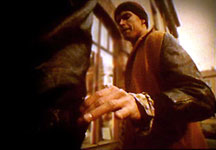 I’ve listened to many travelers recount such tales of their mishaps. Of course, I sympathized, positive that no similar fate would befall me. I prided myself on taking precautions and always being aware of my surroundings.
I’ve listened to many travelers recount such tales of their mishaps. Of course, I sympathized, positive that no similar fate would befall me. I prided myself on taking precautions and always being aware of my surroundings.
At the National Museum of Prague, as I was paying for a book in the gift shop, the lights suddenly went out. The old castle was all confusion as people milled about in the dark. Several minutes later, when the electricity came on, I discovered that my wallet had disappeared.
My husband and I reported the theft to the police. They seemed uninterested. We returned to our hotel and the manager helped us to notify our credit card companies. That’s when I realized that my husband and I shouldn’t have been carrying the same bank and credit cards. We had to put a hold on all of them. Now neither of us had access to credit, and between us we had little more than two hundred dollars in cash. I wondered how long it would take for relatives to wire funds. The answer was never. We were traveling through three countries, staying at a different hotel almost every night. Under the circumstances, no hotel would accept a wire.
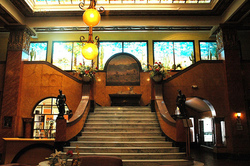 “Please don’t use the towels to clean luggage, shoes or cars,” the sign on the medicine cabinet in the Gadsden Hotel bathroom reads. This ancient grand dame of a place reminds me of the hotel in Pittsburg where we stayed on long car trips when I was a child; “fire trap,” my mother would mutter, hardly deigning to place herself on the cretonne-covered bed, her feet in high-heeled shoes never coming in contact with the scrofulous rug.
“Please don’t use the towels to clean luggage, shoes or cars,” the sign on the medicine cabinet in the Gadsden Hotel bathroom reads. This ancient grand dame of a place reminds me of the hotel in Pittsburg where we stayed on long car trips when I was a child; “fire trap,” my mother would mutter, hardly deigning to place herself on the cretonne-covered bed, her feet in high-heeled shoes never coming in contact with the scrofulous rug.
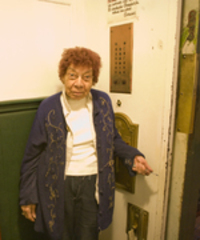 © Francis Donald.Now that motels rule the interstate with their room rates from $29 dollars a night to $58; the Gadsden hardly stands a chance. In its ornate lobby, marble pillars support a ceiling of stained glass; a few undaunted individuals are cleaning up the decorations—fake ivy and silver garlands—left after a presentation for a supplement called something like Xanadu. From the number of chairs set out, they expected a crowd, but the elevator operator ( the old Otis elevator has no door and so must be operated by a employee) says no one came. Loud music blared when we dragged ourselves in but has now been put out, and the remnant of presenters is scurrying to the parking lot (security from 10 pm till 4 am, the hotel clerk assures us), clicking open locks.
© Francis Donald.Now that motels rule the interstate with their room rates from $29 dollars a night to $58; the Gadsden hardly stands a chance. In its ornate lobby, marble pillars support a ceiling of stained glass; a few undaunted individuals are cleaning up the decorations—fake ivy and silver garlands—left after a presentation for a supplement called something like Xanadu. From the number of chairs set out, they expected a crowd, but the elevator operator ( the old Otis elevator has no door and so must be operated by a employee) says no one came. Loud music blared when we dragged ourselves in but has now been put out, and the remnant of presenters is scurrying to the parking lot (security from 10 pm till 4 am, the hotel clerk assures us), clicking open locks.
